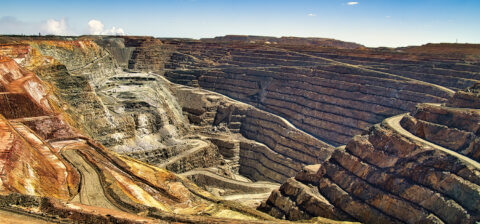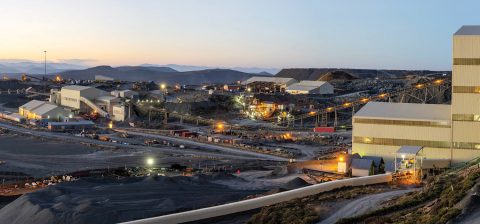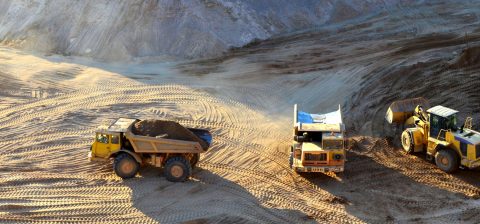SA Mining
Leveraging Technology And Innovation For The Mine Of The Future
By Rodney Weidemann
Technology and innovation are significantly transforming the South African mining industry, focusing on areas like automation, digitalisation, and artificial intelligence (AI), to enhance efficiency, safety, and sustainability.
In addition, mines are leveraging technology to boost not only skills and training, but also sustainability – something that is increasingly important in an extractive industry like mining.
For example, the Sibanye-Stillwater digital mining laboratory (DigiMine) at the Wits Mining Institute (WMI) is an initiative that is paving the way for further research and training. It highlights the importance of what DigiMine head, Dr Ahsan Mahboob, calls “collabovation” – combining both collaboration and innovation – between academia and industry.
“As a flagship initiative of the WMI, we partner with many companies in the private sector to expose our students to the advanced digital aspects of mining technology.
“Our research at DigiMine encompasses various aspects of technology that will help to evolve the smart mine of the future,” he says.
He notes how, for example, DetNet revised its blasting equipment at the DigiMine, allowing researchers and students to learn about the application of leading-edge wireless CyberDet detonators, while also introducing them to the new features of the latest generation blasting equipment.
“With mining’s focus on safety and efficiency, it is important that new entrants to the industry are exposed to the benefits of electronic detonators and the advanced initiation systems that control blasting. This will help to continuously improve operations by bringing new insights based on evolving digital and other leading technologies.”
Net-zero sustainability
Another area where innovation is strong is in the field of sustainability, since this is something that is now an inevitability across all industries.
Governments, communities, and individuals are all taking the issue of climate change seriously, albeit in different ways. Despite this, the industry’s confidence in its ability to meet targets and satisfy expectations by 2030 remains low, signifying a need for significant change, at speed.
According to Martin van Zyl, sales manager for process industries at ABB, much of the strategy to achieve net-zero mining, and for mining to meet the demands of other industries, has been explored and is in progress. Moreover, a great deal of the technology required to meet targets as soon as 2030 has been developed.
“For example, ABB’s eMine is an integrated suite of electrification solutions, designed to support the mining industry’s shift towards decarbonisation and improved energy efficiency.
“The eMine ecosystem enables mining companies to reduce their carbon footprint, optimise operational efficiency, and enhance sustainability through cutting-edge electrification technologies,” he says.
“The solution addresses a critical need in the sector for cleaner, more energy-efficient alternatives to traditional diesel-powered mining equipment. By taking advantage of these strategies and technologies, some regions are already seeing positive change, although globally, the implementation of these changes must accelerate if they are to make the difference they need to make.”
Automating towards 2040
Perhaps one of the most notable innovative technologies in the mining sector is that of automation. As the global mining industry enters an era of rapidly evolving automation, Africa will emerge as a leader in embracing autonomous machinery, according to global technology giant Siemens.
Siemens Sub-Saharan Africa CEO Sabine Dall’Omo indicates that by 2040, it estimates that up to 40% of mining equipment on the continent will be self-driving, and that several prominent mining operations will be close to fully automated, marking a new era of enhanced safety, efficiency, and productivity.
“For Siemens, there are five modernisation trends that will shape African mining by 2040. The first of these is how the autonomous machinery revolution will up the game in sophisticated mining,” she says.
“Research by Siemens indicates that about 30% to 40% of machinery in South African mining will be autonomous by 2040. From self-driving trucks and autonomous drillers to drones and robotic sensors, technology will be minimising human involvement in hazardous tasks at the continent’s more sophisticated mines.”
Redefining every facet of mining operations, she continues, technologies such as AI and internet of things systems will integrate machinery, collect data, optimise workflows in real time, reduce costs, and protect workers from high-risk activities.
The second trend is that AI and big data will truly grow up. Although AI and machine learning have already become the backbone of decision-making in mining operations, by 2040 its power and accuracy is predicted to be astounding.
“Various experts foresee that visualisation tools based on AI, augmented reality and virtual reality, will become the tools of choice to help miners find minerals and work out better operational strategies. Wearable technologies will also guide miners with real-time information to better manage their operations.”
Meanwhile, AI-powered tools will be used across the continent to analyse massive datasets in order to optimise extraction methods, improve mineral discovery rates, protect the environment around mines with much greater precision, and even predict equipment failures.
Job upheavals and reskilling
Dall’Omo notes that another key trend is the rise of digital twins, with up to 40% of South African mines expected to be using digital twins to simulate processes, detect danger and determine the next best actions – especially in rough terrain – by 2040.
“Digital twins are virtual replicas of physical mining sites, and allow engineers to simulate multiple mining scenarios and weigh up opportunity cost more effectively. Engineers can then make the best proactive decisions to reduce operational risks and to maximise output in their mining operations.”
The fourth trend will be the evolution of drones and robots into the eyes, ears and hands of the modern African mine. Siemens estimates that an estimated 35% of mining jobs will be automated by a dizzying array of technologies by the year 2035, and that 50% of jobs will require less human interaction by 2040.
Drones and robots will revolutionise various inspection and maintenance tasks on mines at an exponential rate. This will transform the efficiency of those mines where human access is impractical or downright dangerous.
“The final trend is around the reskilling that will be needed as the Fourth Industrial Revolution in mining continues apace. She notes that as direct human interactions on mines decline, the reskilling of mine workers to engage in more meaningful tasks will become a dominant theme in mining.
This shift will present an opportunity to refocus human efforts on creative, skilled, and less physically taxing work. Traditional roles will be replaced by positions in robotics management, data analytics, cyber security, and digital engineering.
“For mines to embrace the future and ensure their own competitiveness by 2040, they need to invest substantially in their digital transformation in this decade. This includes the reskilling of workers, significant infrastructure upgrades, rapid high-level digitisation – which includes investing in robust, inter-operable systems – and improved cybersecurity and operational risk management to safeguard their highly interconnected digital systems.”
Innovation and technology go hand in hand with autonomous machinery, which represents a pivotal step in future-proofing African mining, she says.
“This is because it presents the continent with the opportunity to lead global mining on automation-enabled safety, efficiency and sustainability.”





